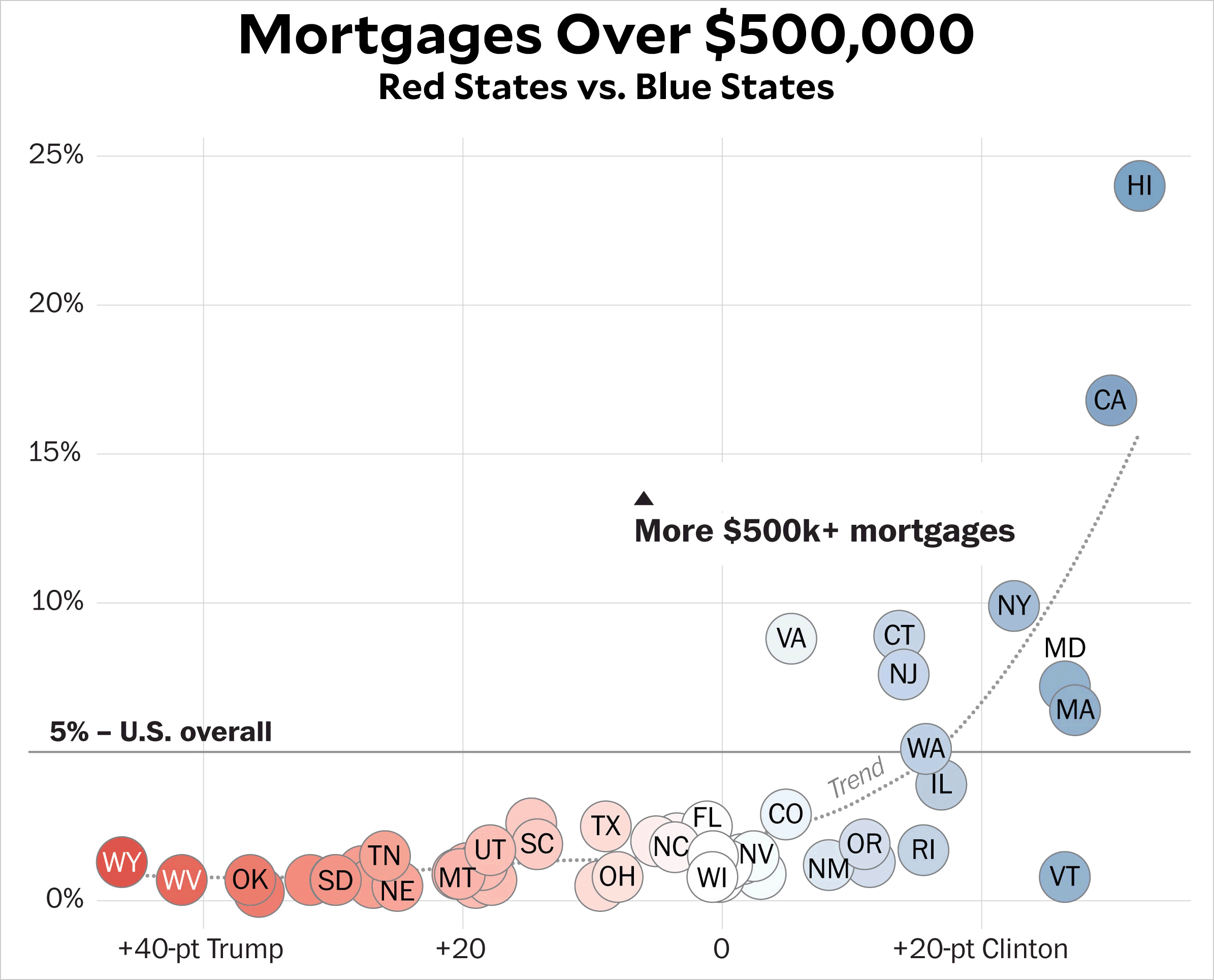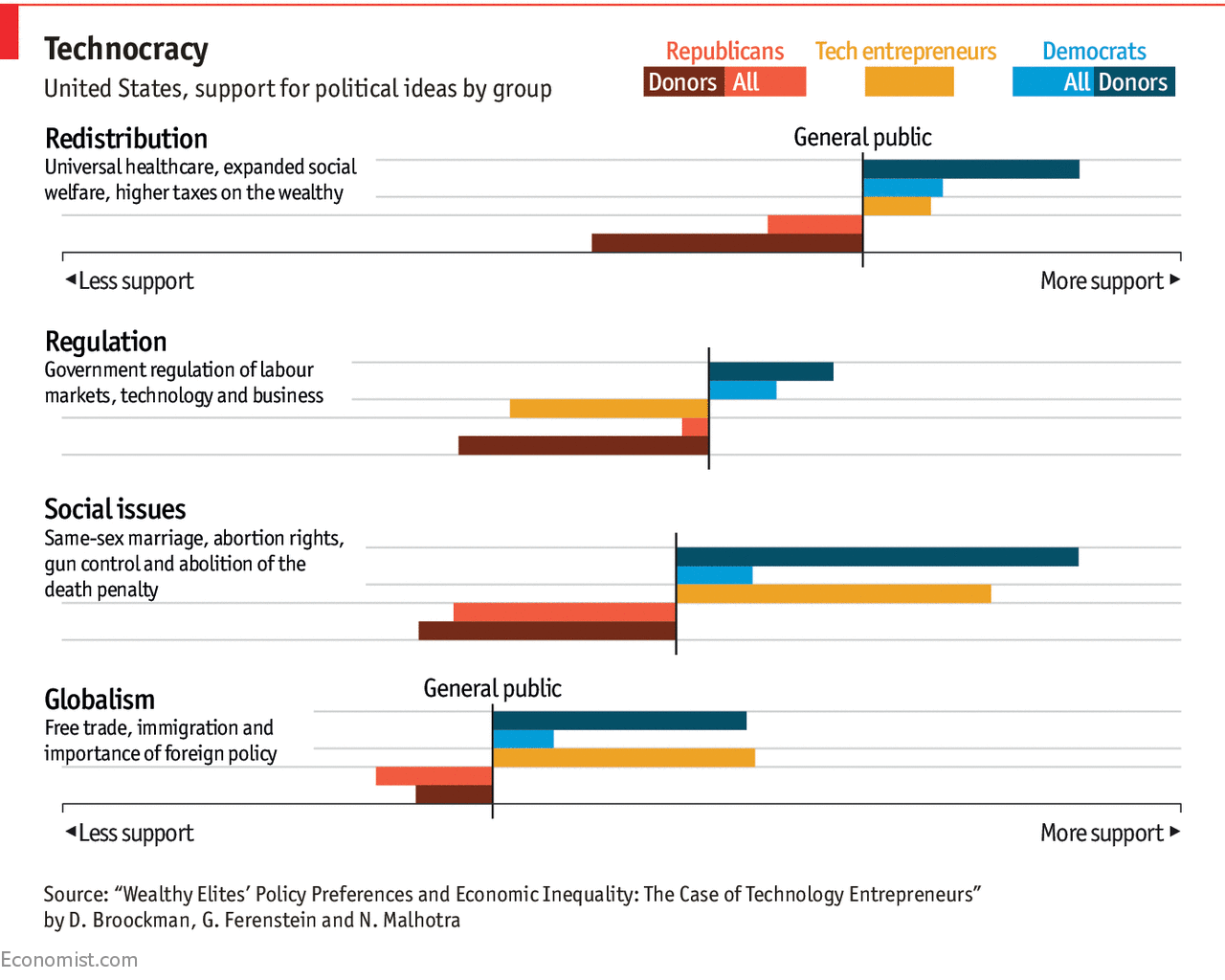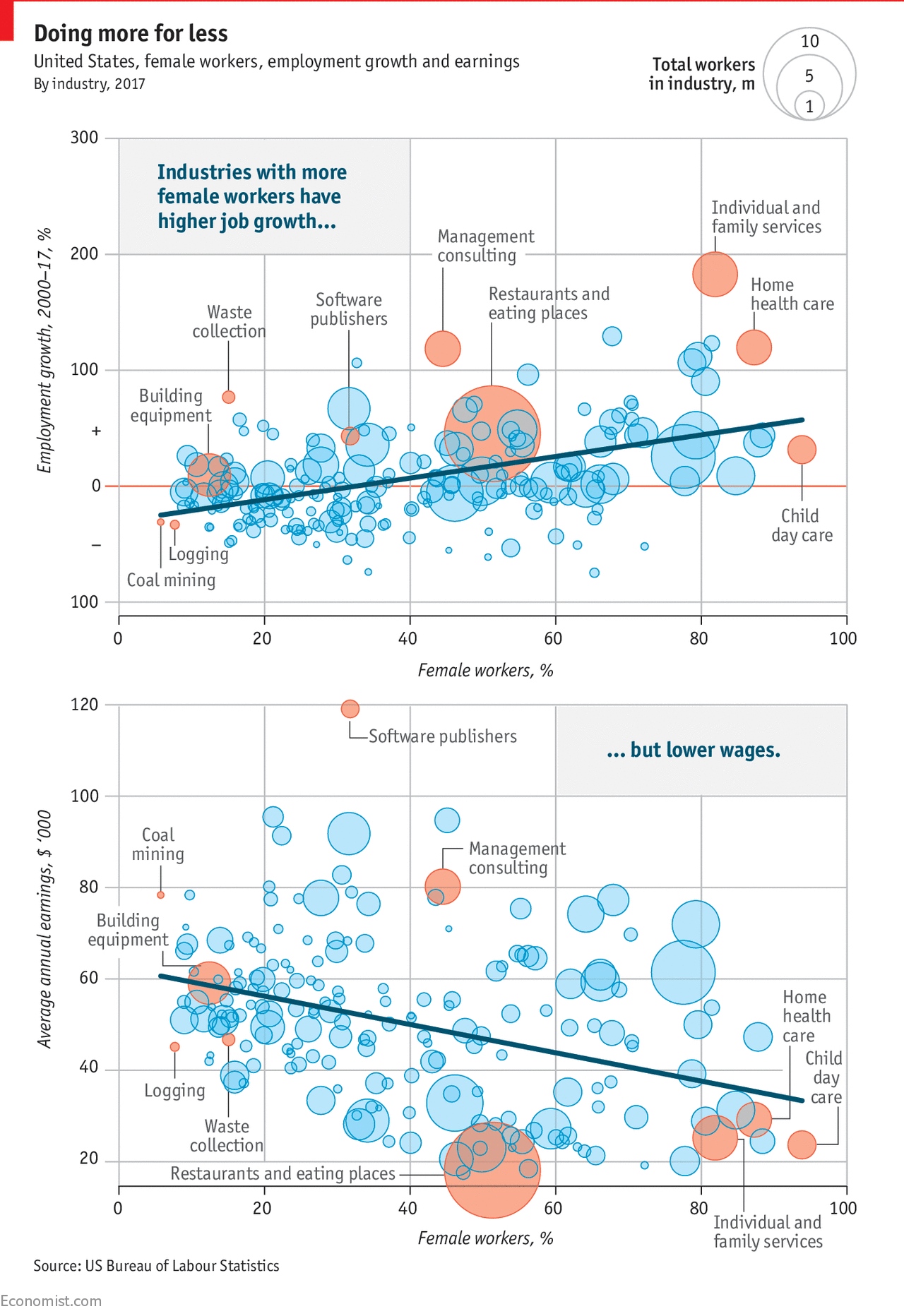Provided
below are six political questions that engineers and engineering organizations
should be thinking about.
Question 1 – Polls
and political commentators have highlighted that this is the most politically divided
the country has been since the Civil War and Reconstruction. Assuming this is true – how should the engineering
communities be thinking strategically about this political divide?
The
graphic on the cover page is from the Federal Reserve Bank of Philadelphia
annual Partisan Conflict Index. The
index was developed by an economist with the bank. We have had periods of high partisanship
(e.g., 1911/12 and current) and low periods (e.g., World War II). Our current historic high level of
partisanship started in the mid-1960s – the start of the Vietnam War, the start
of broad social/cultural change, and drastic changes on the global economic
landscape. Our political paralysis has
produced an era of legislative gridlock at the national level (and in many
state capitals) marked by government of executive action and orders.
Our
current climate of extreme partisanship is linked to three issues – economic
anxiety in the middle class, broad social/cultural/technological changes, and
fringe elements on both the left and right becoming the new middle during
primary election seasons. When economic
growth slows (economic growth is a demanding master – the more you have, the
more you need), society loses pace and it becomes much harder to finesse our
historic political differences. Looking
at the 2016 presidential results, 49% of all voters felt their lives had gotten
worse over the past 50 years, while 49% felt the lives of the next generation
would be worse. The election also
highlighted the political divide between rural and urban voters. Our global economy takes the best and
brightest from our small towns and plugs them into the global economy. Globalization has produced an environment of
“The Left Behinds” and “The Cosmopolitans” – global cities surrounded by rural
communities of resentment. How engineering
organizations position themselves in cities (blue) and the surrounding
communities (red) will be important.
This
negatively has a profound impact on our industry and business (our souring mood
is more about the psychology of dashed expectations rather than the decline in
material comforts). When people lose
faith in the future and have long painful memories of the past, they are less
likely to invest in the present.
Government infrastructure spending during the second quarter of 2017
fell to 1.4% of GDP, the lowest share on record. According to Thomson Reuters, investment by
municipalities in the first seven months of this year, at $50.7 billion, was
nearly 20% below the same period in 2016.
Not long ago optimists were expecting an infrastructure spending boom. Are we still optimistic? Engineering is faced with addressing a
difficult question – Have we hit rock bottom in terms of infrastructure
investment where bipartisanship spending is around the corner or have we tipped
over into political, economic, and societal decline?
Question 2 – Growing
global populism (i.e., support for ordinary people and suspicion of “elite”
individuals and institutions – where the unequal benefits of globalization has
produced the “Left Behinds” vs. the Global Cosmopolitans) has produced a
political dynamic focusing on challenges and opportunities within individual
countries. The strongest social glue is
economic growth and the current populist insurgency is partly fueled by the
deep problems of middle class income and wealth stagnation. As we look inward as a country and society,
what opportunities and challenges does this produce for engineering
organizations?
Growing
populism in the United States stems from a middle class that is falling further
behind upper-income households financially.
The gaps in income and wealth between middle- and upper-income
households widened substantially in the past three to four decades. Although incomes are generally higher than in
1970, all households experienced a lengthy period of decline in the 21st
century thanks to the 2001 recession and the Great Recession of 2007-09. The greatest loss was felt by lower-income
households, whose median income fell 9% from 2000 to 2014, followed by a 4% loss
for middle-income households and a 3% loss for upper-income households. Populism is rooted in a simple idea –
persistent economic disappointment demands a new political narrative. We have entered an era in which societal
disappointment and anxiety is shaping a new global political narrative in the
developed world.
Populism
takes many different regional forms across the various engineering service
areas. Nationalism and isolationism
sentiments could shift money and resources into domestic problems and
challenges – including increased investment in infrastructure. If we
do enter the era of “reshoring” or de-globalization and shorter supply chains,
the critically of infrastructure will change.
If more focus is placed on domestic capabilities, domestic markets, and
domestic consumption – do you really want additional investment in ports and
globalized infrastructure? A populist
revolution could produce many positive opportunities for civil engineers. It could also produce new risks and
challenges.
Question 3 –
Globalization has produced societal and regional winners and losers. A current national political theme is the
desire to ensure that the large majority of Americans once again benefit from
global trade and changing technology, rather than see both as a continual
threat to their economic activity. Politically
shifting winds seem to be changing the dynamics of globalization – the old
economic and trade architecture put in place after the Second World War is now
showing severe signs of subsidence. How
should engineering think strategically about new sets of winners and losers in
a post-peak-globalization period?
The United
States has been the primary cheerleader for the benefits of globalization (i.e.,
the global flow of goods, services, ideas, money, and people) over the last 70
years. The global search for cheap labor
pools has been an important aspect of globalization – but the combination of
enhanced capital mobility and faster and cheaper information flows changed the
nature of international economic development.
Technology has created our current globalized economy – and technology
is also a threat to globalization.
Replacing
cheap labor with robots may provide us with even cheaper goods and services,
but it may also lead to a collapse of global supply chains and, with it, a
reversal of late twentieth-century style globalization. “Reshoring” – thanks to increased automation
and robotics – may lead to the rebuilding of manufacturing in terms of
production but not jobs. Satisfying the
middle class in terms of reshoring your grandparents manufacturing job is a
political impossibility.
The U.S.
recently pulled out of the TPP (Trans Pacific Partnership). The Trump administration starts renegotiation
of NAFTA this week. The president has
promised to bring jobs to the U.S. by rewriting NAFTA, but his pledge is
clashing with the realities of global commerce and supply chains. The era of post-peak globalization is going
to produce new winners and losers – and this will impact engineers. Is a manufacturing win for Indiana a
logistics and trade loss for Texas in terms of NAFTA modifications? How should we be thinking about regions and
communities given the uncertainties and changes in our globalized economy? How will all of this impact foreign
investment in the U.S.? The truth is
that any form of globalization will inevitably require some form of compromise
between the advantages of openness and the benefits of sovereignty. The political debate over this compromise
appears to be intensifying.
Question 4 – Mayors
appear to be the new political kings/queens – leaders in new and different ways
of thinking regarding economic development, innovation, and infrastructure
investment. If our national and state
political leaders continue the path of lukewarm performance, how should engineers
react in the Age of the Mayor King/Queen?
In the
book, The Metropolitan Revolution, the authors point out the top 100
metropolitan areas in the U.S. occupy 12% of the land mass, two-thirds of the
population (with forecasted growth to 75%), and responsible for 75% of the
gross domestic product. The Metropolitan
Revolution is a reminder of politics as a positive force for societal
advancement. The book profiled several
regions and cities that looked at how we develop and manage cities. The profiles show common themes – pragmatism
over partisanship, innovation clustering, regional collaboration, respect for
compromise, regional/global networks, clarity of focus, diversity as a strength
and not a divider, and economic growth driven by the knowledge economy. What distinguishes world class cities from
national governments is the agility to find innovative solutions and to put
them into practice. In terms of change
management, agility, pragmatism, closeness to the actual problems, and new ways
of thinking, cities and regions will be seen as filling in the performance gaps
left by state and federal partisanship paralysis.
The limits
of what cities can and cannot do politically will be tested – especially in the
context of blue cities in red states. From
the Dallas Morning News on August 13, 2017:
“GOP
leaders have made the Democratic mayors of Texas’ largest cities (Dallas,
Houston, San Antonio and Austin, respectively), along with other local
officials, the poster boys for an all-out legislative assault on local
control. Republican lawmakers have filed
legislation that would prevent local governments from making decisions that have
long been left to the elected officials closest to the voters.”
Question 5 –
Technological determinism seems to predict self-driving cars and robot medical
doctors just around the corner. Studies
have indicated 80 million U.S. workers are at risk from automation/AI job
loss. Given that technology and politics
appear to be on a collision course as job displacement grows, how should engineers
think about this strategically?
Disruptive
technology, such as self-driving cars and trucks, can also create new winners
and losers. The politics of
technological winners and losers can be equally unpredictably disruptive. In the case of trucking, some 3.5 million
people (mostly white male with a high school degree or lower – the most common
job title in 29 states) are employed as professional truck drivers – 8.7
million total employed in the trucking/logistics industry segment – roughly 1
in 15 U.S. workers. Teamster union
membership is 1.9 million. The trucking
industry currently has a shortage of 111,000 drivers. In many respects, the politics and regulatory
framework for self-driving trucks and the elimination of millions of trucking
jobs boils down to a race between the technological hare and political/regulatory/societal
tortoise. Job loss associated with
automation in the manufacturing sector happened behind closed doors and locked
gates – trucking job loss is going to happen on the open road and will be much
more visible to the public and politicians.
Technological
determinism is always a risky business – technology revolutions, such as the robotic/AI
revolution, always take longer than predicted, but arrive faster than
anticipated. Humanity has gone through
various economic stages – from agricultural to industry to services. We have been able to move generations through
the various stages – from the farm to the factory to the engineering consulting
or construction firm. Replacing vast
numbers of people with non-humans has the potential to produce a new stage or
class – the Economically Useless Class. If
robotics and AI develop as predicted, the economic pressure on the middle class
will be relentless. How society manages
our next economic stage transition will be important politically to watch.
Question 6 – Politics
over the next 10 years could be a roller coaster of unpredictability and
change. How should we think
strategically about this new and different era and what new strategic planning
steps should be institutionalized that allow all engineering organizations to
be more agile during this era?
Political
risk analysis needs to be shaped by three elements – surprise, anxiety, and
disappointment. Surprise will take many
forms. The U.S. will be minority white
in 2049. We currently have more Spanish
speaking citizens than Spain. We have
never faced a demographic change like this in our history. Time magazine owner Henry Luce coined the
term “American Century” in a February 17, 1941 editorial in Life magazine. We are 76 years into the American
Century. What is next? By 2050, China’s economy will be twice the
size of the U.S. and larger than all the Western economies combined. China celebrates the 100th
anniversary of the PRC in 2049. Are we
at the end of the American Century and the start of the Chinese Century and how
does this impact engineering? We are
walking down a different path for the first time in U.S. history. How will we handle the politics of surprise?
Anxiety
hangs over many segments of the middle class.
The distributional consequences of globalization and technology have
left voters who might traditionally have voted for centrist parties opting
instead to support populists who claim to be more in touch with voters’
concerns. For many people, the
institutions and ideas of globalization are part of the problem, not part of
the solution (globalization lifts all boats – but some set lower in the water due
to the weight of the additional money)?
How does middle class economic and cultural anxiety play out politically
in the coming years?
Finally,
the political risk of disappointment.
Although living standards in the West continue to rise on average, the
pace of increase is much slower than expected and for some there has been no
progress whatsoever. Rising debt levels
are too high, and, in time, some promises societies have made to themselves –
on retirement benefits, pensions, health care, and education – will have to be
abandoned. Finding a political narrative
to explain this looming disappointment will not be easy.
People are
disappointed with the demand side of our government institutions, but some of
the problem rests with the supply side.
Founding father James Madison was concerned that citizens of the U.S.
would be simultaneously too involved and too ignorant in the democratic process
(Churchill thought that the best argument against democracy was a five minute
conversation with the average voter).
Polarization and apathy – the unstoppable force and the easily movable
object shape our current political terrain.
Madison highlighted our democratic process is an asymmetric equation
that could easily turn politics into a running circus.













